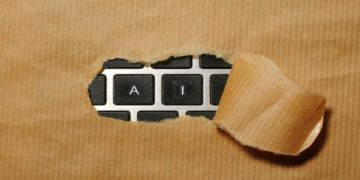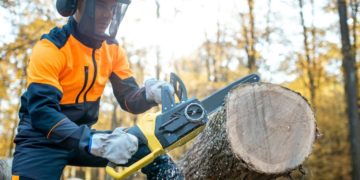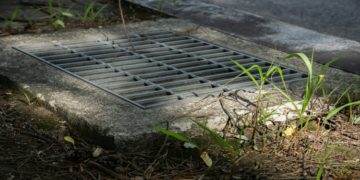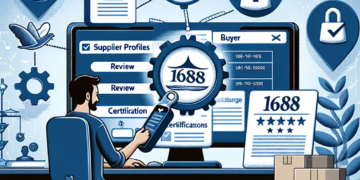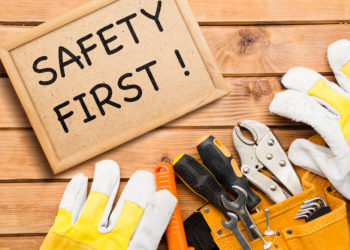When managing excavator maintenance and repair, one decision that holds long-term consequences is where and how parts are sourced. This choice directly impacts equipment reliability, operational downtime, and total ownership costs. From contractors overseeing a handful of machines to fleet managers responsible for dozens of excavators, understanding the distinctions between OEM excavator parts, aftermarket excavator parts, and manufacturer-direct excavator parts is essential for building an effective equipment management strategy.
Recognized excavator parts manufacturers such as We-Attach provide insight into how different parts options fit varying operational needs. By exploring the details below, equipment managers can make informed sourcing decisions that align with project demands, machine lifespan, and cost control objectives.
Understanding OEM Excavator Parts
Original Equipment Manufacturer (OEM) parts are specifically engineered by or for the brand that originally manufactured the excavator. These components match exact factory specifications, ensuring consistent fit, performance, and reliability that mirror the machine’s original setup.
Many businesses prioritize OEM parts, especially when dealing with newer excavators that are still under warranty. For mission-critical equipment where unplanned downtime is unacceptable, OEM components offer a dependable solution. Purchasing OEM parts typically means there is an associated warranty, alongside the assurance that the parts were tested for compatibility with the specific excavator model.
That reliability comes at a cost. OEM parts tend to carry significantly higher price tags compared to other options. This added expense is not solely for the component itself. Much of it covers brand reputation, dealer markups, and the structured supply chain involved in delivering those parts to end users. Additionally, OEM parts may come with longer lead times, particularly if inventory is routed through official dealers or international supply networks.
In many cases, the decision to purchase OEM parts depends on machine age and risk tolerance. While they are ideal for equipment under warranty or on projects where downtime penalties are severe, OEM parts may not always represent the best long-term value for older machines or mixed fleets.
Examining Aftermarket Excavator Parts
An increasingly popular alternative to OEM parts is choosing aftermarket excavator parts. These components are manufactured by third-party companies not officially linked to the original equipment manufacturer. While designed to match OEM fit and function, aftermarket parts can vary widely in quality, material specifications, and overall performance.
One of the primary reasons businesses turn to aftermarket parts is cost efficiency. Prices for aftermarket components are generally much lower than OEM equivalents, offering significant savings over time. This is especially relevant for older excavators where using brand-new OEM parts may no longer be justifiable from a financial standpoint.
However, not all aftermarket parts deliver consistent value. While some aftermarket suppliers maintain high production standards, others cut corners by using lower-grade materials or looser tolerances. The result may be parts that wear out prematurely, fit poorly, or cause compatibility issues that disrupt equipment performance.
To navigate these risks effectively, contractors and fleet managers should focus on sourcing from reputable aftermarket excavator parts manufacturers. Businesses with strong industry reputations typically provide documented quality control processes, product warranties, and responsive customer support. Many equipment managers mitigate potential risks by initially using aftermarket parts on non-critical systems before expanding usage across their fleets.
Key Advantages and Disadvantages of Aftermarket Parts
- Advantages:
- Lower upfront costs, making them budget-friendly for large-scale or ongoing repairs.
- Availability for older excavator models where OEM parts may no longer be stocked.
- Wider variety of sourcing options, including both local and international suppliers.
- Lower upfront costs, making them budget-friendly for large-scale or ongoing repairs.
- Disadvantages:
- Quality can vary, especially from lesser-known manufacturers.
- Potential for fitment or durability issues if tolerances are not properly managed.
- Variable levels of customer support and warranty coverage.
- Quality can vary, especially from lesser-known manufacturers.
When chosen carefully, aftermarket parts offer an effective way to reduce maintenance expenses while keeping equipment operational.
Exploring Manufacturer-Direct Excavator Parts
A third sourcing strategy that continues to grow in popularity is purchasing manufacturer-direct excavator parts. This method involves buying parts directly from the companies that produce components for OEM brands, often the same firms that supply original manufacturers behind the scenes.
Manufacturer-direct sourcing allows businesses to bypass traditional dealer markups and supply chain costs associated with branded OEM products. This approach can deliver substantial savings, especially for high-volume orders or fleets operating on tighter margins. Leading suppliers like We-Attach have seen increasing demand for manufacturer-direct parts from contractors seeking better control over inventory, pricing, and availability.
One of the core benefits of this strategy is the ability to establish a direct relationship with the parts supplier. This often results in faster lead times, more flexible ordering arrangements, and clearer communication about technical specifications or support requirements. In some cases, manufacturer-direct suppliers can even accommodate custom orders or modifications tailored to specific equipment needs.
That said, purchasing parts directly from manufacturers does require a higher level of sourcing expertise. Equipment managers must have a solid understanding of machine specifications, part numbers, and sourcing logistics. Building trust with a supplier also takes time, especially when establishing new business relationships.
Pros and Cons of Manufacturer-Direct Sourcing
- Pros:
- Cost savings by eliminating brand and dealer markups.
- Direct access to technical expertise and support teams.
- Improved control over lead times and inventory management.
- Cost savings by eliminating brand and dealer markups.
- Cons:
- Requires detailed knowledge of equipment and part specifications.
- Involves managing sourcing logistics internally.
- Necessitates supplier vetting and relationship development.
- Requires detailed knowledge of equipment and part specifications.
For businesses managing large fleets or frequently replacing high-use components like pins, bushings, and hydraulic parts, manufacturer-direct sourcing represents a practical balance between cost savings and quality control.
How Leading Companies Mix Their Sourcing Strategies
Across the construction and heavy equipment sectors, successful contractors and fleet managers rarely rely on a single parts sourcing method. Instead, most adopt a blended approach that adjusts based on equipment age, project size, and operational priorities.
Many companies use OEM parts primarily for new excavators still under warranty, ensuring that warranty conditions remain valid and machine reliability stays consistent. For day-to-day maintenance of older machines, aftermarket parts become the preferred option, offering budget-friendly solutions for routine repairs and wear components. At the same time, manufacturer-direct sourcing is increasingly favored for large-volume purchases, allowing businesses to take advantage of lower costs and streamlined inventory management.
Reports from equipment managers who shifted away from dealer-exclusive sourcing show consistent improvements in cost control, part availability, and procurement flexibility. By developing relationships with multiple suppliers and maintaining an adaptable sourcing plan, businesses can optimize both equipment performance and financial outcomes.
Choosing the Right Excavator Parts for Long-Term Value
Selecting between OEM excavator parts, aftermarket excavator parts, and manufacturer-direct excavator parts depends on several factors:
- The age and warranty status of the equipment.
- The size and complexity of the machine fleet.
- Budgetary goals related to maintenance and repair spending.
- The level of risk tolerance concerning part quality and fitment.
For high-stakes projects or newer equipment, OEM parts provide peace of mind through guaranteed compatibility and warranty protection. For cost-conscious operations, aftermarket parts present a viable alternative when sourced from trusted manufacturers. Meanwhile, manufacturer-direct sourcing offers an optimal middle ground for businesses prioritizing both price efficiency and high-quality standards.
Final Thoughts on Excavator Parts Sourcing Strategy
Building an effective parts sourcing strategy requires more than a one-size-fits-all mindset. By understanding the specific differences between OEM, aftermarket, and manufacturer-direct options, equipment managers can create sourcing plans that evolve alongside their machines and business needs.
A structured, mixed approach allows for smarter budgeting, reduced downtime, and greater control over equipment maintenance. Leading excavator parts manufacturers such as We-Attach support contractors and fleet managers in developing these strategies, offering insights that help align parts sourcing with both short-term project demands and long-term operational goals.









